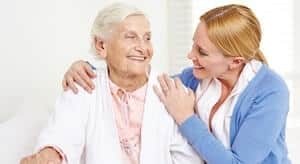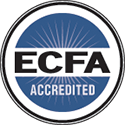Stroke Recovery and Rehabilitation

A stroke occurs when oxygen to the brain is suddenly cut off and the brain cells become oxygen-deprived, causing them to begin to die. There are various reasons a stroke can occur, including a blocked artery, which is an ischemic stroke, or the bursting of a blood cell, otherwise known as a hemorrhagic stroke.
Although a stroke can occur anytime, to anyone, there are certain risk factors that can increase your chance of stroke. The Centers for Disease Control and Prevention (CDC) states more than 795,000 Americans suffer a stroke every year, and stroke is responsible for one out of every 20 deaths in the United States. In fact, stroke is the fifth leading cause of death in Americans and the leading cause for long-term disability. This makes being able to recognize the signs of stroke so vital because when a stroke is caught early enough the chances for a full recovery are much greater.
Some risk factors that can put you at higher risk of stroke are out of your control, such as advanced age, gender, heredity and race, and previous strokes. However, there are certain lifestyle factors that can be avoided to lower your chance of stroke. People who have high blood pressure, use tobacco, have diabetes, have high cholesterol, are obese or live sedentary lifestyles, drink alcohol excessively, or use illegal drugs are more likely to have a stroke at any given time in their life.
The Recovery Process — What to Expect
When caring for a loved one who has suffered a stroke, it is important to know what to expect and when it is time for additional help. Research is still being done regarding the stroke recovery process, as there is still a lot to learn about the ways our brains compensate for the damage stroke can cause. According to Stroke.org, only 10 percent of stroke survivors will almost completely recover, leaving 40 percent of individuals who have had a stroke with moderate to severe impairments.
Immediately following the stroke, it is important for the survivor, family and a medical team to work together to develop a recovery plan. Here are some of the most important things to remember when you or your loved one is recovering from a stroke:
- Many factors influence the recovery process. Depending on the portion of the brain that was affected during the stroke, the recovery process can be very different. Improvements or gains in health can happen quickly or over time, with the most rapid recovery occurring in the first three to four months, and more lengthy recoveries continuing well into the first or second-year post-stroke.
- Ask questions. It’s always better to have more information than not enough. Since every stroke survivor is different, their recovery process is going to be unique to them. Consult a doctor about any medication side effects or home modifications that may be recommended to accommodate the needs of the survivor.
- Reduce your risk of another stroke. People who have suffered a stroke in the past are at higher risk of suffering from a stroke again. Be sure to adapt your lifestyle to eliminate any high-risk factors. Eat healthier, exercise, stop smoking, limit alcohol consumption, and be sure to take medications as prescribed.
- Don’t ignore changes in condition. It is common for individuals who have suffered a stroke to be at higher risk for falls. If a fall results in serious injury, seek medical attention immediately. If falls are smaller and more frequent, consider looking into physical therapy services. It is important to also monitor changes in attitude and behavior. Look for signs of depression or emotional liability (when a person has difficulty controlling emotions) that may occur post-stroke and consult a physician immediately to develop a plan.
Stroke Rehabilitation
After a stroke survivor begins the recovery process, it may become apparent that rehabilitation services are needed. If the individual is experiencing dizziness, imbalance leading to falls, difficulty walking or moving around, needing to stop to rest when walking shorter distances, or increased need for assistance to engage in daily activities, then it is time to consult a physician and create a rehabilitation plan. The goal is to get the survivor back to the highest level of independence and functionality possible. Using a variety of physical, occupational and speech therapies, rehabilitation will be prescribed based on the extent of neurological and physical damage from the stroke. Once the survivor is stable and ready to begin rehabilitation services, the physician and family will decide the best setting to begin therapy.
Rehabilitation Services at Advent Christian Village
Advent Christian Village’s Good Samaritan Center and Copeland Medical Center in Live Oak, Florida, offer both inpatient and outpatient rehabilitation services for stroke recovery and rehabilitation. The excellent team of medical professionals understands that every survivor is unique, and we are here to customize a plan to fit you or your loved one’s needs. Contact us today to learn more about our post-stroke rehabilitation services.



